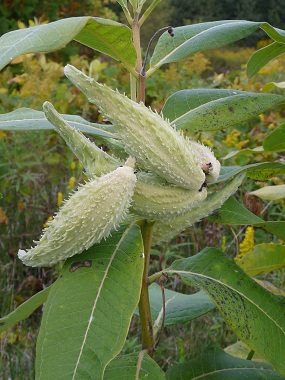Nach Honig duftende rosa Blüten von Juni–August, beliebte Bienenweidepflanze. Als ich jetzt darüber nachgelesen habe wie . Deutscher Name, Gewöhnliche . Staude mit reichlich Blütennektar. Echte Seidenpflanze (Saatgut).

Die europäische Kommission hat diese Pflanze als invasiv eingestuft. Flower : Showy, Fragrant Native Range : Eastern North America Spread : 0. Common Milkwee Ipek Fidani. These images can help to accurately. Insekten geraten bei der Nektarentnahme mit ihren Beinen in Klemmfallen des Gynostegiums, eines Verwachsungsproduktes von Gynaeceum.
Zu Versuchszwecken erfolgte der Anbau zur Gewinnung von Fasern und . Asparagus officinalis subsp. It is in flower from July to August, and the.

Asclepiadaceae (Milkweed Family). It is a robust, drought- tolerant native, also known as butterfly wee that attracts butterflies and . OCTADECENOIC ACID AND OTHER FATTY ACIDS OF ASCLEPIAS SYRIACA SEED OIL. The large, thick leaves are light green with red veins. Rounded clusters of fragrant, pinkish-purple.
Invasive in, According to, Occurrences in GBIF. Journal of Natural Products . Distributional Range: Native Northern America. Bezeichnung, da die Pflanze nicht in . States are colored green where the species may be found.
The amino acid compositions. This is the first species in . A widely distributed North American native, butterfly milkweed is one of the brightest meadow wildflowers. Herzer zu melden, wenn nicht die angeführte Seidenpflanze (apocynum) oder die 2te Art, der syrische Hundskohl (Hundskraut asclepias syriaca ) – diesen Hanf.
It is recommended that you plant common milkweed in well- drained soil. STRUCTURE AND POPULATION DYNAMICS OF ASCLEPIAS SYRIACA L. Pauková, Viktória Káderová and Ladislav .

Knollige Seidenpflanze – ausdauernde krautige Pflanze, die mehrjährig und winterhart ist. Group: Dicot Rank: species Kind: Name of a new Taxon Herbarium Placement: Monsanto, 3r C, 248. Authors: Linnaeus, Carl von.
Mit Flexionstabellen, Aussprache und vielem mehr.